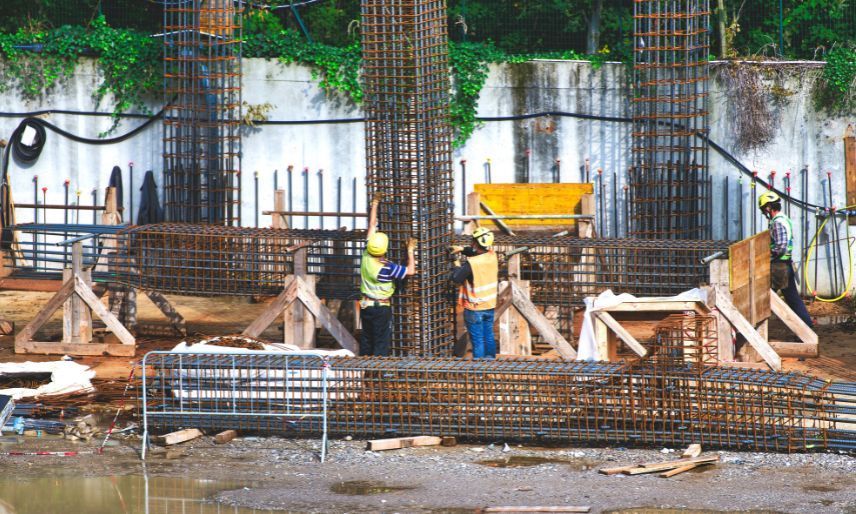Understanding The Cost of A Construction Performance Bond

In the construction industry, performance bonds serve as a crucial financial tool that ensures projects are completed according to contractual obligations. These bonds protect project owners from potential losses due to contractor defaults. However, understanding the costs associated with obtaining a performance bond is essential for contractors and project owners alike. This article delves into the intricacies of construction performance bonds, their costs, and the factors influencing these costs.
What is a Construction Performance Bond?
A construction performance bond is a type of surety bond that guarantees the completion of a project according to the terms specified in the contract. If a contractor fails to fulfill their obligations, the bond provides financial compensation to the project owner. This bond is typically required for larger projects or when the owner wants to mitigate risks associated with contractor performance. The requirement for a performance bond serves as a safeguard, ensuring that the project owner can proceed with confidence, knowing that there is a financial safety net in place should any issues arise during construction.
Key Components of a Performance Bond
Performance bonds consist of three parties: the obligee (the project owner), the principal (the contractor), and the surety (the bond issuer). The surety guarantees that the principal will complete the project as agreed. If the contractor defaults, the surety is responsible for compensating the obligee for any financial losses incurred. This arrangement not only protects the project owner but also encourages contractors to adhere to high standards of performance, as their reputation and financial stability are at stake.
These bonds are often categorized into two types: bid bonds and performance bonds. While bid bonds are submitted during the bidding process to ensure that the contractor will enter into a contract if selected, performance bonds are activated once the contract is awarded, ensuring project completion. Additionally, performance bonds can vary in terms of their coverage amounts, which are typically a percentage of the total contract value. This percentage can range from 50% to 100%, depending on the project's size and the perceived risk involved. The higher the risk associated with a project, the more likely it is that a larger bond will be required to protect the interests of the project owner.
Furthermore, the process of obtaining a performance bond involves a thorough evaluation of the contractor's financial stability, experience, and past performance on similar projects. Surety companies conduct this due diligence to assess the risk they are taking on by issuing the bond. As a result, contractors with a solid track record and strong financials are more likely to secure bonds with favorable terms, while those with less experience may face higher premiums or even difficulty obtaining a bond at all. This dynamic creates an incentive for contractors to maintain high standards of quality and reliability in their work, ultimately benefiting the entire construction industry.
The Cost of a Performance Bond
The cost of a performance bond is typically calculated as a percentage of the total contract amount. This percentage can vary widely based on several factors, including the contractor's creditworthiness, the project's size, and the complexity of the work involved.
Percentage Rates
Generally, the cost of a performance bond ranges from 0.5% to 3% of the total contract value. For example, if a contractor is working on a $1 million project, the bond cost could be between $5,000 and $30,000. The exact rate depends on the contractor's financial standing and the perceived risk associated with the project.
Contractors with a strong financial history and a proven track record of successful project completion may secure lower rates, while those with less experience or financial instability may face higher costs.
Factors Influencing Bond Costs
Several factors can influence the cost of a construction performance bond, including:
- Credit History: A contractor's credit score plays a significant role in determining bond costs. A higher credit score typically results in lower premiums.
- Project Size and Complexity: Larger and more complex projects may be viewed as higher risk, leading to increased bond costs.
- Contractor Experience: A contractor with a solid track record of completing projects on time and within budget may qualify for better rates.
Additionally, the nature of the project itself can impact bond costs. For instance, projects involving public infrastructure, such as highways or bridges, may require more stringent bonding requirements due to the potential for significant public impact and the necessity for compliance with government regulations. This can lead to higher premiums as the surety companies assess the risks associated with public scrutiny and regulatory compliance.
Moreover, the economic climate can also play a role in determining bond costs. In times of economic uncertainty or recession, surety companies may tighten their underwriting standards, leading to increased bond costs for contractors. Conversely, during periods of economic growth, competition among surety providers may drive prices down, making it more favorable for contractors seeking performance bonds. Understanding these dynamics is crucial for contractors as they navigate the complexities of securing performance bonds for their projects.
Understanding the Underwriting Process
The underwriting process for performance bonds involves a thorough evaluation of the contractor's financial stability, experience, and the specifics of the project. Surety companies assess these factors to determine the risk associated with issuing the bond.
Financial Assessment
During the underwriting process, sureties will review the contractor's financial statements, including balance sheets, income statements, and cash flow projections. This financial assessment helps the surety gauge the contractor's ability to complete the project and fulfill their obligations.
Contractors may be required to provide additional documentation, such as tax returns and bank statements, to support their financial claims. A strong financial profile can lead to lower bond premiums, while weaknesses may result in higher costs or even denial of the bond application. Furthermore, sureties often look for indicators of financial health, such as liquidity ratios and debt-to-equity ratios, which can provide insights into the contractor's ability to manage cash flow and meet short-term obligations. The more robust the financial indicators, the more confidence a surety will have in the contractor's capacity to handle the project successfully.
Experience and Reputation
In addition to financial assessments, sureties evaluate the contractor's experience and reputation within the industry. This evaluation often includes checking references, reviewing past projects, and assessing the contractor's relationships with suppliers and subcontractors.
A contractor with a positive reputation and a history of successful project completions is more likely to receive favorable bond rates. Conversely, a contractor with a history of disputes or defaults may face higher costs or challenges in securing a bond. The surety may also consider the contractor's specialization in the type of project being undertaken, as experience in similar projects can significantly reduce perceived risk. Additionally, the contractor's ability to maintain strong relationships with stakeholders, including clients and regulatory bodies, can further enhance their standing in the eyes of the surety, potentially leading to more favorable underwriting outcomes.
Types of Performance Bonds
There are various types of performance bonds tailored to different project needs. Understanding these types can help contractors and project owners choose the most appropriate option for their specific situation.
Standard Performance Bonds
Standard performance bonds are the most common type, guaranteeing that the contractor will complete the project per the contract terms. If the contractor defaults, the surety will step in to complete the project or compensate the project owner for losses incurred.
These bonds are often required for public projects, ensuring that taxpayer funds are protected and that projects are completed as promised. They serve as a financial safety net, allowing project owners to have peace of mind knowing that there are mechanisms in place to mitigate risks associated with contractor defaults. The process of obtaining a standard performance bond typically involves a thorough review of the contractor's financial stability, past performance, and overall capability to fulfill the contract requirements.
Maintenance Bonds
Maintenance bonds are a type of performance bond that guarantees the contractor will address any defects or issues that arise after project completion. These bonds typically cover a specific period, often ranging from one to two years, depending on the project type.
Maintenance bonds provide additional protection for project owners, ensuring that the contractor remains responsible for the work completed even after the project is finished. This is particularly important in construction projects where wear and tear can lead to unforeseen problems. By having a maintenance bond in place, project owners can rest assured that if any issues arise, they will be promptly addressed without incurring additional costs. Moreover, these bonds encourage contractors to maintain high-quality workmanship, knowing they will be held accountable for their work in the long run. This not only fosters a sense of responsibility but also enhances the overall reputation of contractors who consistently deliver quality projects.
Benefits of Obtaining a Performance Bond
Obtaining a performance bond offers numerous benefits for contractors and project owners. These advantages can significantly impact the overall success of a construction project.
Risk Mitigation
One of the primary benefits of a performance bond is risk mitigation. For project owners, a performance bond provides assurance that the contractor will complete the project as agreed. In the event of a contractor default, the bond protects the owner from financial losses, allowing them to seek compensation from the surety.
For contractors, having a performance bond can enhance credibility and instill confidence in potential clients. It demonstrates a commitment to completing projects responsibly and can be a deciding factor when competing for contracts.
Moreover, performance bonds can also serve as a safeguard against delays and subpar work. Should a contractor fail to meet the specified standards or timelines, the surety company can step in to ensure that the project is completed satisfactorily. This not only protects the project owner’s investment but also helps maintain the contractor's reputation in the industry, as they are held accountable for their commitments.
Access to Larger Projects
Many larger projects, especially those funded by government entities, require performance bonds as a prerequisite for bidding. By obtaining a performance bond, contractors can access a broader range of project opportunities, increasing their potential for growth and revenue.
Additionally, performance bonds can serve as a differentiator in competitive bidding situations, showcasing a contractor's reliability and financial stability.
In many cases, the ability to secure a performance bond can open doors to prestigious contracts that might otherwise be unattainable. This is particularly true in sectors such as infrastructure development, where the scale and complexity of projects necessitate a higher level of assurance regarding performance. Contractors who can demonstrate their bonding capacity not only gain access to these lucrative opportunities but also position themselves as leaders in their field, capable of handling significant responsibilities and challenges.
Challenges in Obtaining a Performance Bond
While performance bonds offer various benefits, there are challenges that contractors may face when seeking to obtain them. Understanding these challenges can help contractors prepare and improve their chances of securing a bond.
Financial Scrutiny
The underwriting process for performance bonds involves extensive financial scrutiny, which can be daunting for some contractors. Sureties require detailed financial documentation, and any weaknesses in a contractor's financial profile may lead to higher bond costs or denial of the bond application.
Contractors must be prepared to present a strong financial case, which may involve improving credit scores, maintaining accurate financial records, and addressing any outstanding debts. Additionally, contractors should consider the importance of demonstrating a solid track record of completed projects, as this can significantly enhance their credibility in the eyes of the surety. A history of successful project delivery not only showcases reliability but also indicates a contractor's ability to manage finances effectively, which is crucial for securing favorable bond terms.
Time Constraints
The process of obtaining a performance bond can be time-consuming, especially for contractors who may be under tight deadlines to secure a project. Delays in the underwriting process can lead to missed opportunities or project start dates.
To mitigate this challenge, contractors should begin the bonding process early in the project timeline and work closely with surety companies to expedite the evaluation process. It can also be beneficial for contractors to establish a relationship with a surety agent who understands their business and can advocate on their behalf. This relationship can streamline communication and facilitate quicker responses from the surety, ultimately reducing the time it takes to obtain the bond. Furthermore, contractors should be proactive in gathering all necessary documentation and addressing any potential issues that could arise during the review, as this preparation can significantly shorten the overall timeline for securing a performance bond.
How to Secure a Performance Bond
Securing a performance bond involves several steps that contractors must follow to ensure a smooth application process. Understanding these steps can help contractors navigate the bonding landscape effectively.
Choose a Reputable Surety Company
The first step in securing a performance bond is to choose a reputable surety company. Contractors should research potential sureties, checking their financial strength, reputation, and experience in the construction industry. It is essential to look for companies that have a solid track record of issuing bonds in the contractor's specific field, as this can greatly influence the bond approval process.
Working with a knowledgeable insurance agent or broker can also be beneficial, as they can guide contractors in selecting the right surety company and navigating the application process. Additionally, contractors should seek out reviews and testimonials from other professionals who have successfully secured bonds through the surety companies they are considering. This firsthand insight can provide valuable information about the surety's responsiveness and reliability during the bonding process.
Prepare Documentation
Once a surety company is chosen, contractors must prepare the necessary documentation for the bond application. This documentation typically includes financial statements, project details, and information about the contractor's experience and qualifications. It is crucial for contractors to ensure that their financial statements are up-to-date and accurately reflect their current financial standing, as this will be a key factor in the underwriting decision.
Providing accurate and comprehensive information can help streamline the underwriting process and improve the chances of securing favorable bond rates. Additionally, contractors may want to include letters of recommendation from previous clients or partners, as these can serve as endorsements of their reliability and performance. A well-organized and thorough application not only demonstrates professionalism but also builds trust with the surety company, potentially leading to a smoother approval process and better bond terms.
Conclusion
Understanding the cost of a construction performance bond is essential for contractors and project owners alike. By recognizing the factors that influence bond costs, the underwriting process, and the various types of performance bonds available, stakeholders can make informed decisions that protect their interests.
While obtaining a performance bond may present challenges, the benefits it offers in terms of risk mitigation and access to larger projects make it a valuable investment in the construction industry. With careful planning and preparation, contractors can secure the necessary bonds to enhance their credibility and ensure successful project completion.



